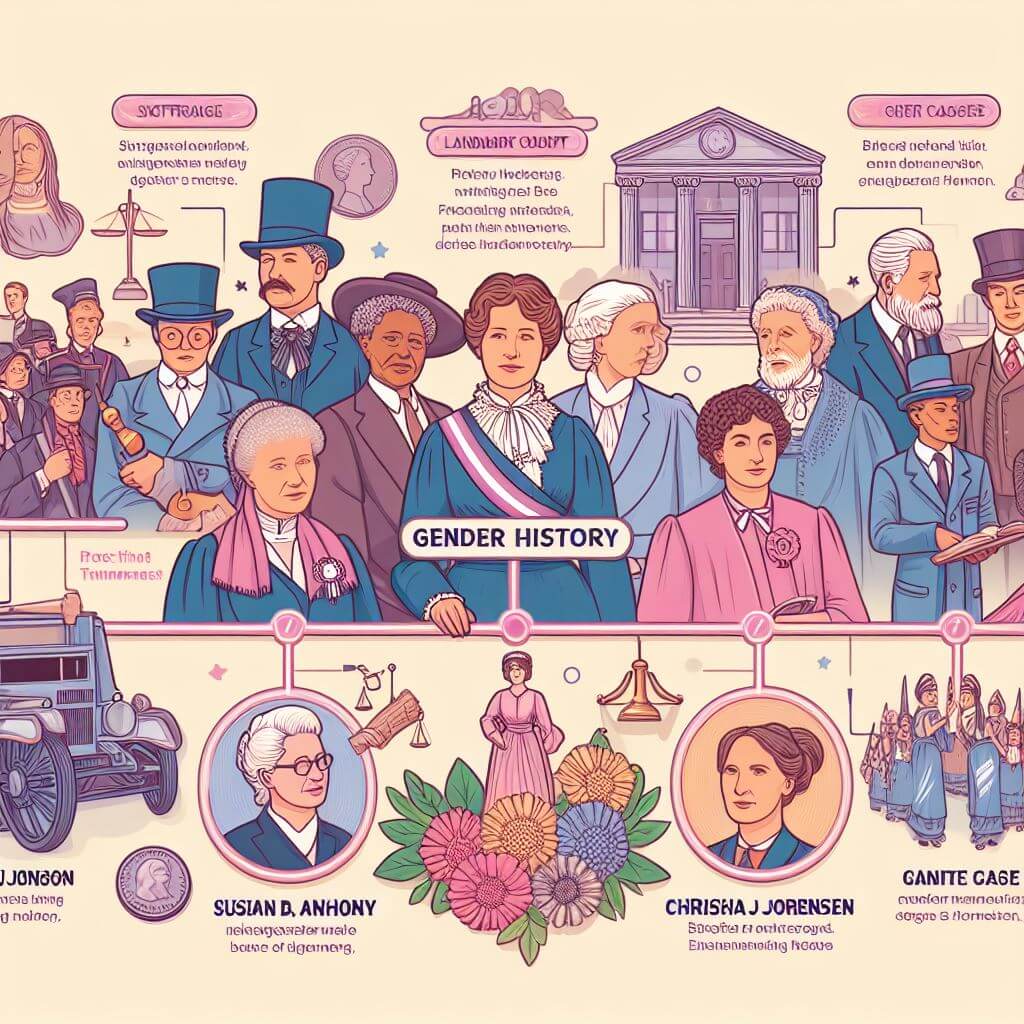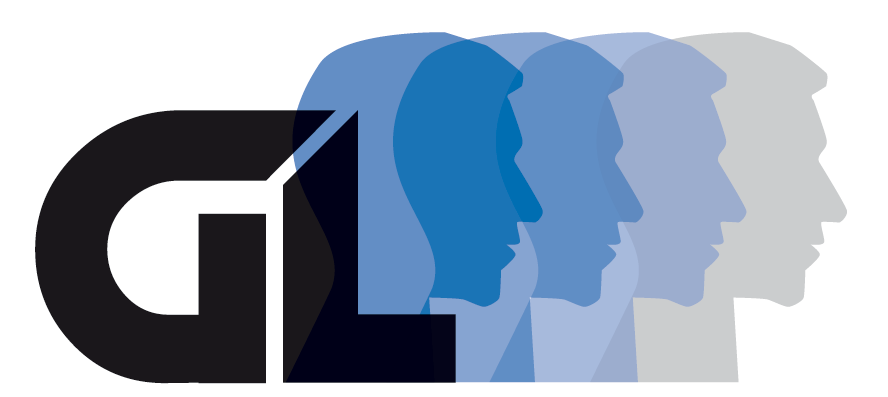Gender has been a defining aspect of societies and cultures throughout human history, undergoing significant evolution and transformation over the centuries. This evolution was influenced by numerous factors, including economic changes, scientific discoveries, and social movements. Understanding the history of gender requires studying how societies have constructed gender roles and how these roles have changed over time.
Early Societies and Gender Roles
In early human society, gender roles were largely defined by the physical differences between males and females and the corresponding division of labor and responsibilities critical to survival. However, these roles were a necessity rather than a forced hierarchy that ensured the success of communal living under harsh conditions. Hunter-gatherer societies, for example, typically saw men engaged in hunting because of the physical strength required to track and kill large animals. Women, participating in gathering vegetation, nuts, and small animals, also played a key role in raising children and managing the social structure of the group.
 In agricultural societies that followed hunter-gatherer cultures throughout human history, the division of labor became more pronounced due to the physical demands of farming and animal husbandry. Men were mainly responsible for the hard work in the fields, while women’s roles tended towards sorting seeds, sowing, and domestic duties. These societies gave birth to private property and, as a result, family structures aimed at managing inheritance, which further reinforced distinct gender roles.
In agricultural societies that followed hunter-gatherer cultures throughout human history, the division of labor became more pronounced due to the physical demands of farming and animal husbandry. Men were mainly responsible for the hard work in the fields, while women’s roles tended towards sorting seeds, sowing, and domestic duties. These societies gave birth to private property and, as a result, family structures aimed at managing inheritance, which further reinforced distinct gender roles.
It is important to note the existence of matriarchal societies where women had considerable power in governance, spirituality, and economic life. In such cultures, the concept of gender was fluid and roles were not clearly defined by biology. For example, some indigenous cultures in North America, Europe, and Asia have had instances of female warriors and leaders, as well as the recognition of a third or more gender, challenging the binary gender structure.
Archeological and historical evidence suggests that the concepts of masculinity and femininity were not the same in ancient civilizations. In ancient Egypt, for example, women could own property, and run businesses, and were often depicted as equals to men in art and literature. Similarly, in certain periods of ancient Rome and Greece, women enjoyed freedom, including owning property and engaging in trade, although these rights were not universally applied and often depended on class and wealth.
Middle Ages to Enlightenment
During the Middle Ages, changes in social structures and religious influences further cemented gender roles, with the Church playing a key role in defining and perpetuating gender norms. The society was predominantly patriarchal and women’s roles were mostly confined to the domestic sphere, focusing on raising children and managing the household by the Christian teachings of the time. Despite these limitations, women in the Middle Ages could wield considerable power, especially in the realms of religion and, sometimes, politics. Female monarchs such as Eleanor of Aquitaine and religious figures such as Hildegard of Bingen navigated these rigid gender roles to leave a lasting legacy.
Medieval guild systems also played a role in defining gender roles, with most skilled trades dominated by men. Women were generally excluded from guild membership, limiting their economic opportunities to roles considered appropriate for their gender, such as seamstresses or market vendors. However, widows were sometimes able to inherit their husbands’ places in the guilds, allowing them a degree of economic independence that women of the time were not usually allowed.
As Europe moved from the Middle Ages to the Renaissance and Enlightenment, an intellectual and cultural revival began to challenge many societal norms, including those related to gender. The Renaissance, with its emphasis on humanism, saw an increased focus on individual potential and value, regardless of gender. Women such as Isabella d’Este, known as the “First Lady of the World,” had significant cultural and political influence, patronizing the arts and participating in the intellectual discourse of the time.
The Enlightenment of the 17th and 18th centuries marked a fundamental shift in thinking about gender. Philosophers and intellectuals advocated natural rights and equality, which laid the foundation for later feminist movements. Education became a central issue; figures such as Mary Wollstonecraft in England advocated for women’s rights to education, arguing that women appeared inferior only because they lacked the same educational opportunities as men. Her seminal work A Vindication of the Rights of Woman (1792) criticized the prevailing notion of women’s inferiority and advocated equal education opportunities.
This period also marked the beginning of the visibility of women in science, with pioneers such as Emilie du Châtelet in France, who translated and added to Isaac Newton’s Mathematica Principia. Despite considerable societal resistance, the intellectual achievements of these women began to challenge the deeply ingrained gender norms of their societies.
The Enlightenment’s impact on gender roles was a double-edged sword; while promoting reason and equality, it also reinforced some gender stereotypes. For example, Rousseau’s educational philosophy, detailed in his book Emile, held that men and women occupy different spheres and that women are naturally suited to a domestic role. Thus, while this period planted the seeds of future movements for gender equality, it also perpetuated certain restrictive norms.
The 19th Century
The Industrial Revolution played a crucial role in changing gender roles. The transition from agrarian economies to industrialized societies led to significant changes in family structures and the nature of work. Women and children joined the factory workforce under often harsh conditions, underscoring the need for labor reform and drawing attention to the role of women outside the domestic sphere. This economic change allowed women to contribute directly to family income and challenged the notion of men as sole breadwinners, setting the stage for broader debates about women’s rights and roles in society.
At the same time, organized movements for suffrage and women’s rights arose in the 19th century. In the United States, the Seneca Falls Convention of 1848, organized by Elizabeth Cady Stanton and Lucretia Mott, marked the beginning of organized women’s suffrage. The Declaration of Sentiments signed at Seneca Falls mirrored the Declaration of Independence, affirming the equality of women with men and listing grievances that specifically concerned the disenfranchisement of women.
In the United Kingdom, figures such as Emmeline Pankhurst and her daughters led the suffragette movement, using more militant tactics to demand the right to vote for women. These movements were not isolated; they were part of a global wave of increasingly vocal demands for women’s rights, including property rights, access to education, and the right to divorce.
Another important aspect of the 19th century was the rise of literary feminism. Women writers such as Mary Shelley, Jane Austen, and the Brontë sisters used literature to comment on the social roles of women and the limitations placed on them by society. Their works often highlighted the limited opportunities available to women and criticized the institution of marriage as a defining feature of a woman’s life.
This century witnessed significant scientific and intellectual contributions by women that challenged dominant notions of female intellectual inferiority. Ada Lovelace’s work on Charles Babbage’s first general-purpose mechanical computer, the Analytical Engine, earned her recognition as one of the first computer programmers.
The second half of the 19th century also laid the groundwork for what would later become the women’s rights movement, which evolved into more organized and national forms, with established groups advocating for women’s suffrage, education, and legal rights. Despite considerable resistance, these movements laid the groundwork for significant legal and social change in the 20th century.
The 20th Century and Beyond
At the beginning of the 20th century, significant milestones for women’s rights were achieved, including women gaining the right to vote. In 1920, the United States ratified the 19th Amendment, giving American women the right to vote, a victory that reverberated around the world. Later, many countries followed suit, recognizing women’s suffrage as a fundamental right. This period also saw an increase in women’s participation in the workforce, especially during the World Wars, when women took on roles traditionally held by men engaged in combat. This shift was intended not only to fill job gaps but also to showcase women’s abilities in a wide range of occupations, challenging the gender norms of the time.
The mid-20th century was defined by the feminist second wave, which broadened its focus from suffrage to a wider range of issues, including sexuality, the family, the workplace, reproductive rights, and legal inequality. Pioneers such as Simone de Beauvoir, whose seminal work The Second Sex (1949) challenged essentialist views of women, and Betty Friedan, whose 1963 book The Feminine Mystique sparked a wide-ranging public debate about the role of women, were instrumental in this move This wave of feminism also saw the legalization of birth control and abortion in many countries, giving women more autonomy over their bodies and reproductive choices.
The latter part of the 20th century and the beginning of the 21st century brought issues of gender identity and sexual orientation to the fore, pushing the boundaries of the traditional gender binary. Transgender rights and the broader LGBTQ+ movement have challenged societal norms by advocating for the recognition and rights of individuals across the gender and sexuality spectrum. Legal milestones such as the legalization of same-sex marriage in many countries and the recognition of the rights of transgender individuals to change their legal gender mark significant progress in understanding gender as a complex and fluid construct rather than a fixed binary code.
The advent of digital technologies and social media in the late 20th and early 21st centuries radically changed the dissemination of information and the mobilization of social movements, including those related to gender issues. Online platforms have given voice to marginalized communities, fueled global solidarity movements, and fostered greater awareness and understanding of the diversity of human gender and sexual identity. Campaigns for gender equality, anti-harassment movements like #MeToo, and advocacy for transgender and non-binary rights have found a global audience, illustrating the power of digital communication in shaping contemporary gender discourse.
